- 한국어
- English
- 日本語
- 中文
- العربية
- Español
- Français
- Deutsch
- Pусский
- Tiếng Việt
- Indonesian
|
Monthly KOREA’s March 2019 issue. ▶ Link to Webzine |
Cheongju, Chungcheongbuk-do Province, is a city reachable within 90 minutes from Seoul and
represents the province’s charm of harmonious coexistence between the old and the new.
From Sangdangsanseong Fortress that was built a thousand years ago to the recently opened branch of the
National Museum of Modern and Contemporary Art, these are leading attractions of this must-visit city.
Written by Lee Eun-yi, designer & writer / Photo courtesy of National Intangible Cultural Heritage Association, Lee Deoug Eun
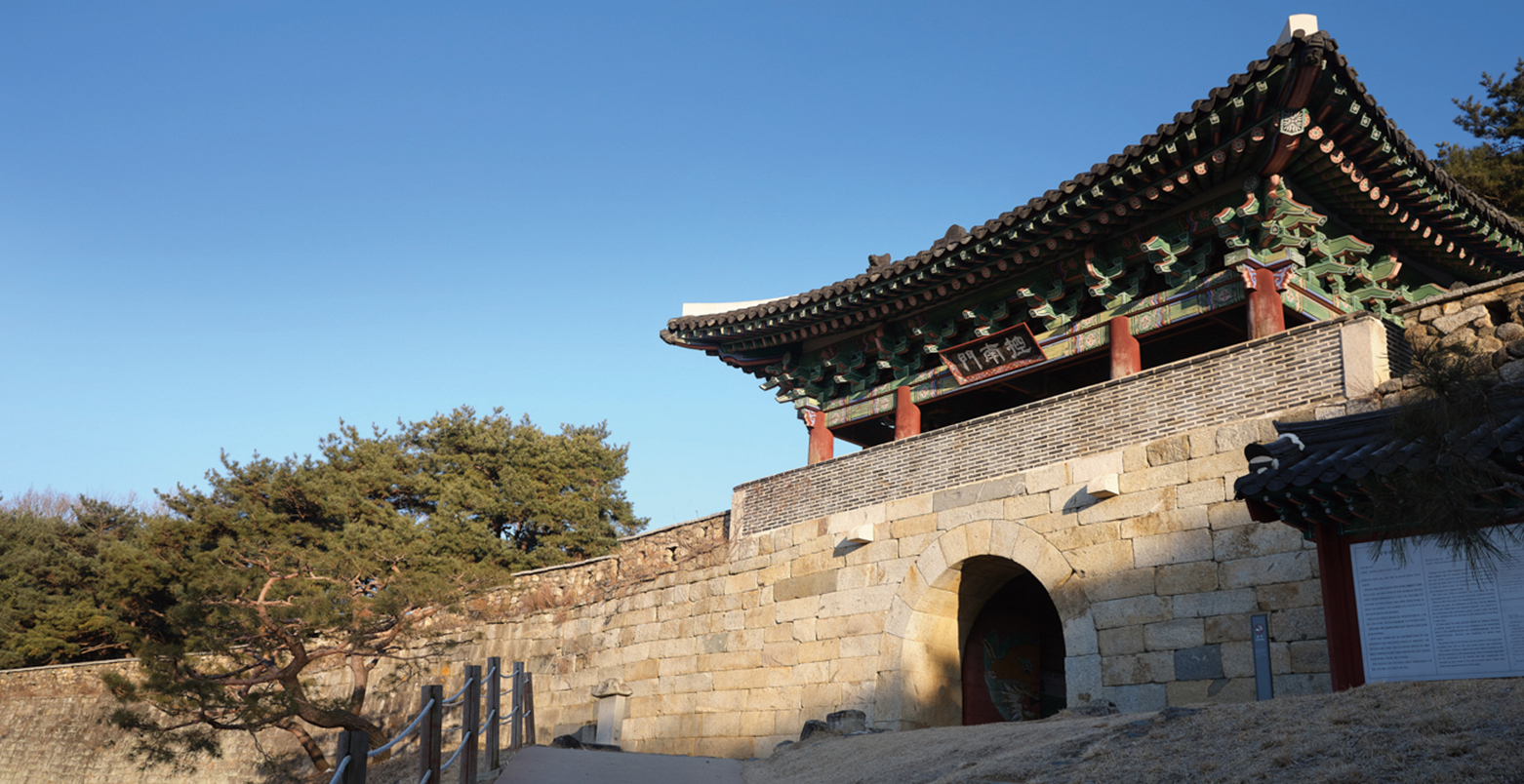
Cheongju has provided a place for people to live for a long time. The fortress built on the mountain, though its magnitude not as overwhelming as Pyramid in Egypt, quietly touches one’s heart when looking at it. Sangdang is how Cheongju used to be called in the past. It seems as if today’s hustle and bustle of the city is protected by tradition and history. The fortress’s architectural beauty and well-preserved surrounding landscape accentuate the value of this heritage. Standing a long time has left the fortress worn out in some parts, but its esthetic and cultural value has never faded away.
Sangdangsanseong Fortress dates back to the Joseon Dynasty period (1392-1910). While it was already the strategic foothold connecting the south and north provinces, after the Japanese Invasion of Korea in 1592, the fortress became even more important for Joseon. King Sukjong (1674-1720) ordered the facility’s construction but not until the reign of King Yeongjo (1724-1776), who recognized the area’s geographical importance, was the work expedited and ultimately completed after rebellions attacked and took down the fortress. In 1728, a bier, or a movable stand used to carry a corpse or coffin to a graveyard during a funeral, reached the edge of the forest in front of the fortress. After seeing mourners in funeral attire go up to the bier to weep and give their condolences, the soldiers stationed on the fortress’ walls suspected nothing. The bier, however, did not contain a corpse but was filled with weapons. That night, forces rebelling against King Yeongjo attacked and seized the fortress. When Yeongjo successfully squashed them, he tried to reinforce the royal power, which completing the strong fortress was part of.
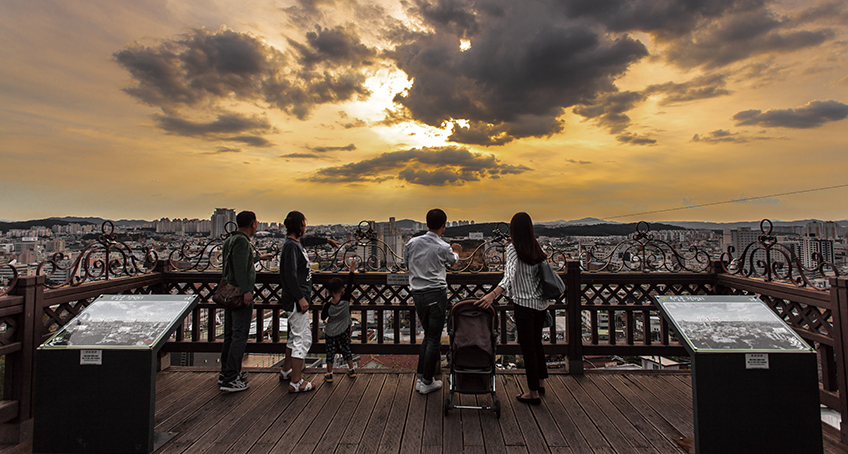
Uamsan Observatory offers a panoramic view of Cheongju. © Cheongju-si
Compared to its past martial role, the fortress of today is quite different. Children frolic on the large lawn in front of the south gate and hikers visit year-round to enjoy the gentle slopes and idyllic natural scenery. A hike up along the fortress’ path offers a panoramic scene of Cheongju. Whether seeing a pohyeol, a hole for cannons placed on the fortress wall, or the secret entrance ammun while hiking up, the fortress’ 1,000 years of history becomes apparent.
Suamgol:
Multicolored Mural Village
Suamgol used to be a poor hillside village until about 10 years ago. Dull gray walls made of cement and houses with slate roofs were closely clustered together around narrow alleys. Thanks to a public arts project in 2007, this neighborhood received a facelift. The walls were turned into canvases and artists native to the region painted murals of ordinary people under the theme “Taking a Trip Down Memory Lane.” As flamboyant colors and paintings filled up the building walls, streets that were once dreary with dull colors began to come alive. The area has since emerged as a cultural attraction that many visit and talk about.
Suamgol Mural Village is not that big, so 20-30 minutes is all it takes to see all of it. Its narrow alleys have many beautiful sights such as a painting of a mother hen leading her chicks, another of children playing in sand and a colorful mosaic mural created on wood paneling. In addition to murals, the village also features fun pieces made from used coal briquettes by artist Lim Min. The eyes and mouths drawn on the briquettes form goofy expressions that make onlookers smile.
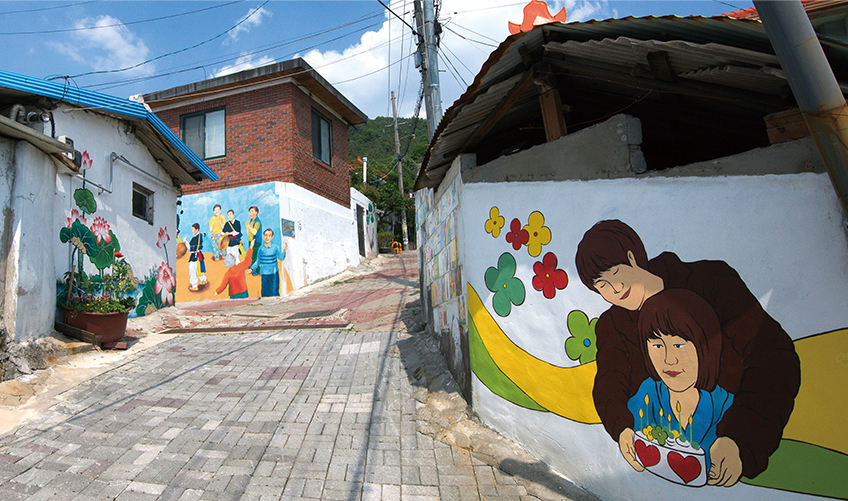
Suamgol Multicolored Mural Village is a must-see tourist site in Cheongju. © Cheongju-si
Cheongju Bukbu Market:
Ongoing Youth Movement
Cheongju Bukbu Market, established in 1971, retains the feel and charm of an old marketplace while being the city’s second-largest market; only Yukgeori Market is bigger.
Also one of the nation’s five major traditional markets, Bukbu has stores for meat, fruits and vegetables, fish, tofu, side dishes and rice cake that have operated for decades. More recently, a youth startup project seeks to restore the market back to its former glory. Stores run by young entrepreneurs sell a variety of items like sweet rice donuts, macarons and hand-made items. Originally, the stores were all lined up next to each other but have since been more evenly distributed throughout the market next to other stores, forming a mutually beneficial partnership. The market now attracts a range of customers from children to seniors. More importantly, these “youth stores” have attracted more young people to the traditional market, giving Bukbu fresh energy and vigor.
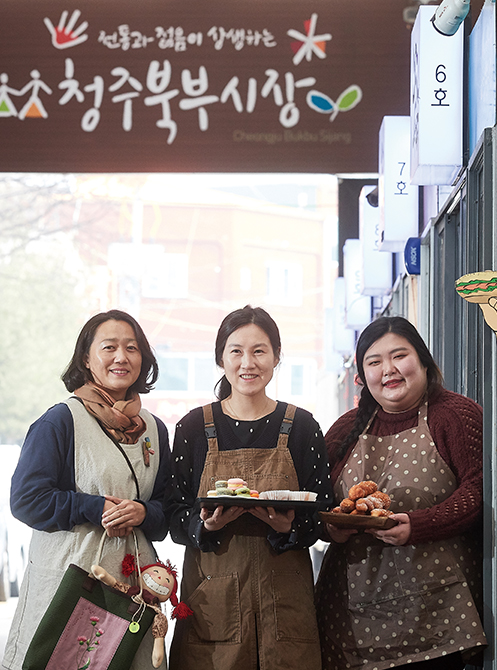
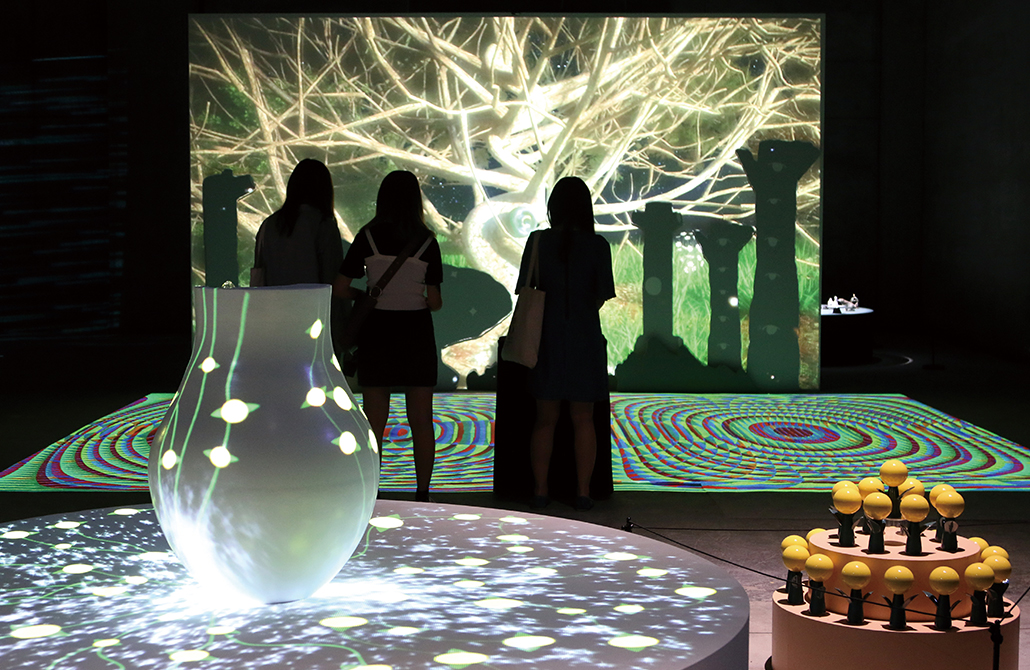
Vendors at Cheongju Bukbu Market welcome visitors with their bright smiles. The market has young and energetic vibe, especially with the recent youth startup project.(left)
Cheongju’s art exhibitions and events including Cheongju Craft Biennale are gaining worldwide recognition. © Cheongju-si (right)
MMCA Cheongju:
From Cigarette Factory to Art Museum
The National Museum of Modern and Contemporary Art in Cheongju, opened in December last year, is the fourth branch of the museum to open following those in Gwacheon, Seoul and Deoksugung Palace. As part of an urban regeneration project, the Cheongju branch was built by turning an old cigarette factory into a modern museum, and this attracted attention long before the facility’s official opening. A highlight of this museum is the practice of open storage, a worldwide trend among museums allowing visitors to see more works of protected art.
More than 1,300 artworks that had been stored at the museum’s main building in Gwacheon, Gyeonggi-do Province, were transferred to the Cheongju branch. Storage at the latter is largely divided into three sections: open storage in which the audience can enter to see artworks, visible storage that exhibits paintings sensitive to temperature and humidity, and special storage accessible with reservation. The difference between a storage exhibit and an ordinary one is that visitors do not just see works selected by curators but rather discover the information and knowledge contained in various works to reach their own interpretations.
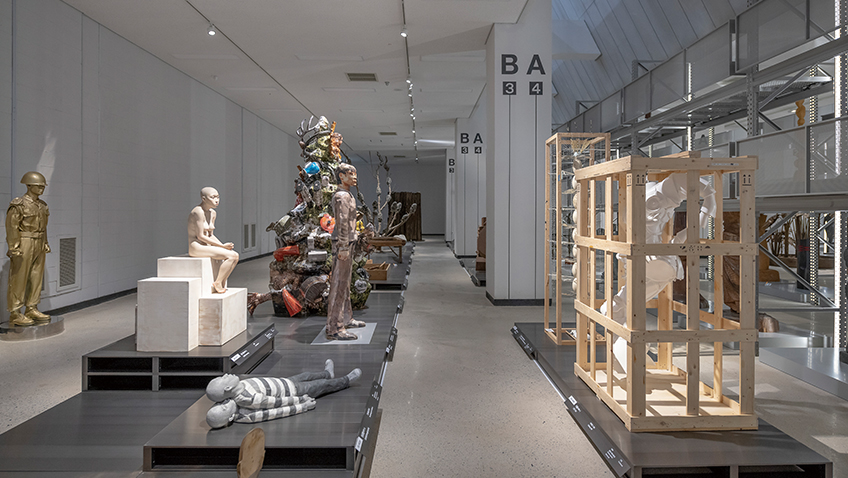
Contemporary artworks in storage at the National Museum of Modern and Contemporary Art in Cheongju are popular among audience. © MMCA Cheongju
A visit to Cheongju is never complete without a stop at the museum. By opening up its storage and preservation laboratories, which had previously been restricted to the public, the facility offers a refreshing esthetic experience. Visitors can consider it a space not just for seeing works of art but also for restoring and preserving art.
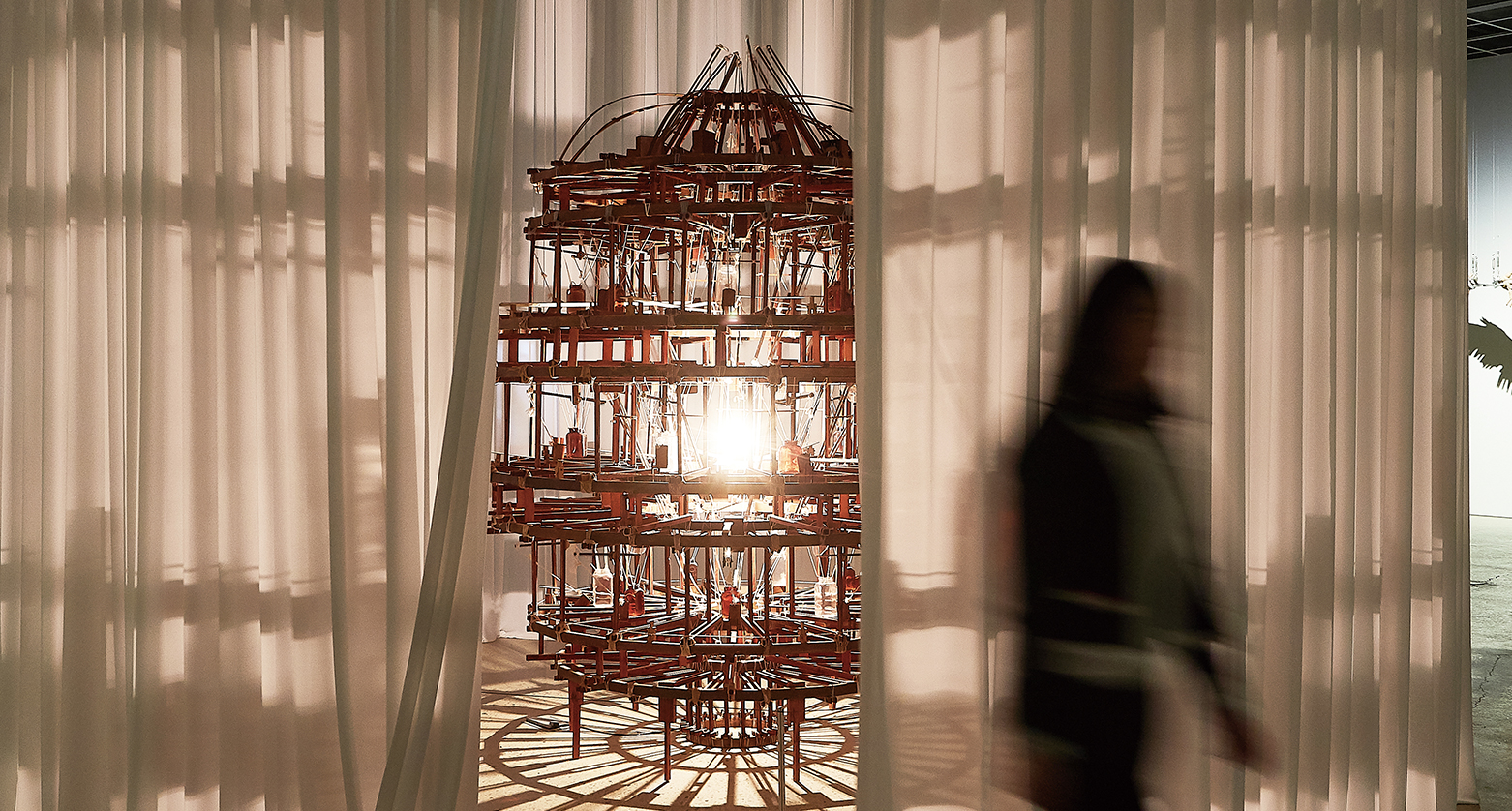
Yang Junguk’s “Fatigue Is Always with Dreams” portrays people and dreams using diverse forms of objects. © MMCA Cheongju